France ( i /ˈfræns/ franss or /ˈfrɑːns/ frahnss;
i /ˈfræns/ franss or /ˈfrɑːns/ frahnss;  French pronunciation (help·info): [fʁɑ̃s]), officially the French Republic (French: République française, pronounced: [ʁepyblik fʁɑ̃sɛz]), is a state in Western Europe with several overseas territories and islandslocated on other continents and in the Indian, Pacific, and Atlantic oceans.[15]Metropolitan France extends from the Mediterranean Sea to the English Channel and theNorth Sea, and from the Rhine to the Atlantic Ocean. It is often referred to as l’Hexagone("The Hexagon") because of the geometric shape of its territory. It is bordered (clockwise starting from the northeast) by Belgium, Luxembourg, Germany, Switzerland, Italy andMonaco; with Spain and Andorra to the south. France is linked to the United Kingdom by the Channel Tunnel, which passes underneath the English Channel. In addition to these borders on the European continent France has land borders with Suriname and Brazilthrough French Guiana, as well as with the Netherlands through the Collectivity of Saint Martin. It is the largest west-European country and possesses the second-largestExclusive Economic Zone in the world, covering 11,035,000 km2 (4,260,000 mi2), just behind the one of the United States (11,351,000 km2 / 4,383,000 mi2).
French pronunciation (help·info): [fʁɑ̃s]), officially the French Republic (French: République française, pronounced: [ʁepyblik fʁɑ̃sɛz]), is a state in Western Europe with several overseas territories and islandslocated on other continents and in the Indian, Pacific, and Atlantic oceans.[15]Metropolitan France extends from the Mediterranean Sea to the English Channel and theNorth Sea, and from the Rhine to the Atlantic Ocean. It is often referred to as l’Hexagone("The Hexagon") because of the geometric shape of its territory. It is bordered (clockwise starting from the northeast) by Belgium, Luxembourg, Germany, Switzerland, Italy andMonaco; with Spain and Andorra to the south. France is linked to the United Kingdom by the Channel Tunnel, which passes underneath the English Channel. In addition to these borders on the European continent France has land borders with Suriname and Brazilthrough French Guiana, as well as with the Netherlands through the Collectivity of Saint Martin. It is the largest west-European country and possesses the second-largestExclusive Economic Zone in the world, covering 11,035,000 km2 (4,260,000 mi2), just behind the one of the United States (11,351,000 km2 / 4,383,000 mi2).
Over the past 500 years,[16] France has been a major power with strong cultural,economic, military and political influence in Europe and in the world. During the 17th and 18th centuries, France colonised great parts of North America; during the 19th and early 20th centuries, France built the second largest empire of the time, including large portions of North, West and Central Africa, Southeast Asia, and many Caribbean anPacific Islands.
France is a unitary semi-presidential republic with its main ideals expressed in theDeclaration of the Rights of Man and of the Citizen. The French Republic is defined as indivisible, secular, democratic and social by its constitution.[17] France is one of the world's most developed countries[18] and possesses the fifth largest economy by nominal GDP[19] and Europe's second largest economy. France enjoys a high standard of livingas well as a high public education level, and has also one of the world's highest life expectancies.[20] It is the most visited country in the world, receiving 82 million foreign tourists annually.[21] France has the world's fourth largest nominal military budget, the third largest military in NATO and EU's largest army. France also possesses the third largest nuclear weapons stockpile in the world[22]-with ~300 active warheads as of 25 May 2010- and the world's second largest diplomatic network (only second to the network of the United States)[23].
France is a founding member of the United Nations, and a member of the Francophonie, the G8, G20, NATO, OECD, WTO, and the Latin Union. It also is a founding member state of the European Union and is the largest one by area.[24] It is one of the fivepermanent members of the UN Security Council. In 2007, France was listed 14th on theHuman Development Index and 24th on the Corruption Perceptions Index.
History
Main article: History of France
See also: Military history of France, Economic history of France, and Territorial formation of France
Etymology
Main article: Name of France
See also: List of country name etymologies
The name "France" comes from the Latin Francia, which means "country of the Franks".[25] There are various theories as to the origin of the name of the Franks. One is that it is derived from the Proto-Germanic word frankon which translates as javelin orlance as the throwing axe of the Franks was known as a francisca.[26] Another proposed etymology is that in an ancient Germanic language, Frank means free as opposed toslave.
However, it is also possible that the word is derived from the ethnic name of the Franks because, as the conquering class, only the Franks had the status of freemen.[citation needed] In German (and other Germanic languages, such as Scandinavian languages and Dutch), France is still called "Realm of the Franks" (Frankreich, Frankrike, Frankrige). In order to distinguish from the Frankish Empire of Charlemagne, Modern France is called Frankreich in German, while the Frankish Realm is called Frankenreich.
Prehistory and Antiquity
The oldest traces of human life, in what is now France, date from approximately 1,800,000 years ago. Men were then confronted by a hard and variable climate, marked by several glacial eras which modified their framework of life and led them to a nomadic life of hunters-gatherers. France counts a large number of decorated caves from the upper Paleolithic era, including one of the most famous and best preserved: Lascaux (Dordogne, approximately 18,000 BC).
At the end of the Last glacial period (10.000 BC), the climate softened and from approximately 7,000 BC, this part of Western Europe entered the Neolithic era and its inhabitants becamesedentary. After a strong demographic and agricultural development between the 4th and 3rd millennia, metallurgy appeared at the end of the 3rd millennium, initially with the work of gold, copper and bronze, and later with iron. France counts numerous megalithic sites from the Neolithic period, including the exceptionnally dense Carnac stones site in Brittany (c. 3,300 BC).
In 600 BC, Ionian Greeks, originating from Phocaea, founded the colony of Massalia (present-dayMarseille), on the shores of the Mediterranean Sea, making it the oldest city of France.[27][28] At the same time, some Gallic Celtic tribes penetrated some parts of the current territory of France, but this occupation spread in the rest of France only between the 5th and 3rd century BC.
The concept of Gaul emerged at that time; it corresponds to the territories of Celtic settlement ranging between the Rhine, the Atlantic Ocean and the Mediterranean Sea. The borders of modern France are approximately the same as those of ancient Gaul, which was inhabited by Celtic Gauls. Gaul was then a prosperous country of which the southernmost part was heavily subject to Greek and Roman influences. However, around 390 BC, the Gallic chieftain Brennus made his own way through the Alps, defeated the Romans in the Battle of the Allia and sacked Rome for several months. The Gallic invasion left Rome weakened and encouraged several subdued Italian tribes to rebel. One by one, over the course of the next 50 years, these tribes were defeated and brought back under Roman dominion. Meanwhile, the Gauls would continue to harass the region until 345 BC, when they entered into a formal treaty with Rome. But Romans and Gauls would maintain an adversarial relationship for the next several centuries and the Gauls would remain a threat in Italia.
Around 125 BC, the south of Gaul was conquered by the Romans who called this regionProvincia Romana ("Roman Province"), which evolved into the name Provence in French.[29] The sacking of Rome was still remembered by Romans, when Julius Caesar conquered the remainder of Gaul, and overcame a revolt carried out by the Gallic chieftain Vercingetorix in 52 BC.[30]
Gaul was divided by Augustus into Roman provinces, the principal ones being Gallia Narbonensis in the south, Gallia Aquitania in the south-west, Gallia Lugdunensis in the center and Gallia Belgica in the north. Many cities were founded during the Gallo-Roman period, including Lugdunum (present-dayLyon), which is considered to be the capital of the Gauls. These cities were built in the traditional Roman style, with a forum, a theatre, a circus, anamphitheatre and thermal baths. The Gauls mixed with Roman settlers and eventually adopted Roman speech (Latin, from which the French language evolved) and Roman culture. The Roman polytheism merged with the Gallic paganism into the samesyncretism.
Around the 3rd century AD, Roman Gaul underwent a serious crisis with its "limes" (fortified borders protecting the Empire) crossed on several occasions by Barbarians. The weakness of the central imperial power, at this time, led Gallo-Roman leaders to proclaim the independence of the short-lived Gallic Empire, which ended with the Battle of Châlons in 274, which saw Gaul reincorporated in the Roman Empire.
Nevertheless, the situation improved in the first half of the 4th century AD, which was a period of revival and prosperity for Roman Gaul. In 312, the emperor Constantin I converted to Christianity. Christians, persecuted until then, multiplied across the entire Roman Empire. But, from the second half of the 4th century AD, the Barbarian Invasions started again, and Germanic tribes, such as the Vandals, Suebi andAlans crossed the Rhine and settled in Gaul, Spain and other parts of the collapsing Roman Empire. At the end of the Antiquity period, ancient Gaul was divided into several Germanic kingdoms and some remaining Gallo-Roman territories, notably the Kingdom of Syagrius.
Middle Age to Revolution
Main articles: France in the Middle Ages, Absolute monarchy in France, Ancien Régime in France, Early modern France, and List of French monarchs
The pagan Franks, from whom the ancient name of “Francie” was derived, originally settled the North-East of Gaul, but conquered most of northern and central Gaul, under Clovis I. The Frankish King Clovis I was the first Germanic conquerors after the fall of the Roman Empire to convert, in 498, to Catholic Christianity, rather than Arianism; thus France obtained the title “Eldest daughter of the Church” (La fille aînée de l’Église) from the papacy,[31] and the French kings would adopt this as justification for calling their country “the Most Christian Kingdom of France”, until theFrench Revolution. The Franks embraced the Christian Gallo-Roman heritage, and ancient Gaul was progressively renamed Francia ("Land of the Franks"). The Germanic Franks adoptedRomanic languages, except in northern Gaul where Roman settlements were less dense and where Germanic languages emerged. Clovis made Paris his capital and established theMerovingian dynasty but his kingdom would not survive his death. The Franks treated land purely as a private possession and divided it among their heirs, so four kingdoms emerged: Paris,Orléans, Soissons, and Rheims. The last Merovingian kings, sometimes referred as Rois fainéants ("lazy kings"), lost effective power to their mayors of the palace.
The mayor of the palace, Charles Martel, defeated a Muslim invasion from Hispania at the Battle of Tours (732) and earned respect and power within the Frankish Kingdoms. His son Pepin the Short eventually seized the crown of Francia from the discredited Merovingians and founded theCarolingian dynasty. Pippin's son, Charlemagne reunited the Frankish Kingdoms and built a vast empire across Western and Central Europe.
Proclaimed "Roman Emperor" by the Pope, Charlemagne tried to revive the Western Roman Empire and its cultural grandeur, from its Palace of Aachen. The efficient administration of this immense empire was ensured by high civil servants, carrying the, still non-hereditary, titles of counts (in charge of a County),marquis (in charge of a March), dukes (military commanders), etc.
Charlemagne's son Louis I (emperor 814–840) kept the empire united; however, this Carolingian Empire would not survive Louis I's death. The Empire was divided between Louis' three sons, with the Treaty of Verdun (843), into East Francia to Louis the German, Middle Francia to Lothair Iand West Francia to Charles the Bald. Western Francia approximated the area occupied by modern France and was the precursor to modern France.[32] Constantly threatened by Viking invasions, France became a very decentralised state: the nobility's titles and lands became hereditary, the authority of the king became more religious than effective and constantly challenged by powerful noblemen. Thus was established feudalism in France. Some of the king's vassals would grow so powerful that they would become a threat to the king. By example, after the Battle of Hastings, in 1066, the Duke of Normandyadded "King of England" to his titles, becoming vassal (as Duke of Normandy) and equal (as king of England) to the king of France.
The Carolingian dynasty ruled France until 987, when Hugh Capet, Duke of France and Count of Paris, was crowned King of France.[33] His descendants, the Direct Capetians, the House of Valois and the House of Bourbon, progressively unified the country through a series of wars, such as the Saintonge War, and dynastic inheritance into a Kingdom of France. The Albigensian Crusade was launched in 1209 to eliminate the heretical Cathars in the south-western area of modern-day France. In the end, the Cathars were exterminated and the autonomous County of Toulouse was annexed.[34] Later Kings expanded their territory to cover over half of modern continental France, including most of the North, Centre and West of France. French knights took also an active part in the various Crusades that were fought, between 1095 and 1291, to restore Christian control over the Holy Land. Meanwhile, the royal authority became more and more assertive, centred around a hierarchically conceived society distinguishing nobility, clergy, and commoners.
Charles IV (The Fair) died without an heir in 1328.[35] Under the rules of the Salic law adopted in 1316, the crown of France could not pass to a woman, nor could the line of kinship pass through the female line.[35] Accordingly, the crown passed to the cousin of Charles, Philip of Valois, rather than through the female line to Charles' nephew, Edward, who would soon become Edward III of England. In the reign of Philip of Valois, the French monarchy reached the height of its medieval power.[35] However, Philip's seat on the throne was contested by Edward III of England and in 1337, on the eve of the first wave of the Black Death,[36] England and France went to war in what would become known as the Hundred Years' War.[37] The exact boundaries changed greatly with time, but French landholdings of the English Kings remained extensive for decades. With charismatic leaders, such as Joan of Arc and La Hire, strong French counterattacks won back all English continental territories, except Calais which was captured in 1558 by the French. France had a population of about 17 million,[38] which by the end of the Hundred Years War had declined by about one-half.[39]
The French Renaissance saw a long set of wars, known as the Italian Wars, between the Kingdom of France and the powerful Holy Roman Empire It saw also the first standardization of the French language, which would become the official language of France and the language of Europe's aristocracy. French explorers, such as Jacques Cartier or Samuel de Champlain, claimed lands in the Americas for France, paving the way for the expansion of the First French colonial empire. The rise of Protestantism in Europe led France to a civil war know as the French Wars of Religion, where, in the most notorious incident, thousands of Huguenots were murdered in the St. Bartholomew's Day massacre of 1572.[40] The wars of Religion were ended in France by Henry IV's Edict of Nantes which granted some freedom of religion to the Huguenots. Henry IV was eventually murdered by a Catholic fanatic.
The monarchy reached its height during the 17th century and the reign of Louis XIV. By turning powerful feudal lords into courtiers in Versailles, Louis XIV's personal power became unchallenged. Remembered for his numerous wars, he made France the leading European power. At this time, France possessed the largest population in Europe (see Demographics of France) and had tremendous influence over European politics, economy, and culture. Since the 18th century, French was the most used language in diplomacy, science, literature and international affairs, until the emergence of the USA in the 20th century.[41] In addition, France obtained many overseas possessions in the Americas, Africa and Asia.
Under Louis XV, while the continental territory of France kept growing, with notable acquisitions such asLorraine (1766) and Corsica (1770), most of its overseas possessions were lost after the French defeat during the Seven Years' War, which ended in 1763.
Louis XVI actively supported the Americans seeking independence from Great Britain (realized in the 1783 Treaty of Paris). The example of the American Revolution was one of the many contributing factors to the French Revolution.
Much of the Enlightenment occurred in French intellectual circles, and major scientific breakthroughs and inventions, such as the automobile(1771) and the first hot air balloon carrying passengers (1783), were achieved by French scientists in the 18th century. The Enlightenment philosophy, in which reason was advocated as the primary source for legitimacy and authority, undermined the Absolute monarchy and prepared the French Revolution.
Monarchy to Republic
Main articles: France in the long nineteenth century and France in the twentieth century
After the storming of the Bastille on 14 July 1789, the absolute monarchy was abolished and France became a constitutional monarchy. Through the Declaration of the Rights of Man and of the Citizen, the French Republic established fundamental rights for French citizens and all men without exception. The Declaration affirms "the natural and imprescriptible rights of man" to "liberty, property, security and resistance to oppression". It called for the destruction of aristocratic privileges by proclaiming an end to exemptions from taxation, freedom and equal rights for all men, and access to public office based on talent rather than birth. The monarchy was restricted, and all citizens were to have the right to take part in the legislative process. Freedom of speech and press were declared, and arbitrary arrests outlawed. The Declaration also asserted the principles of popular sovereignty, in contrast to the divine right of kings that characterized the French monarchy, and social equality among citizens, eliminating the privileges of the nobility and clergy.
In 1792, the French Republic was proclaimed. As Europeanmonarchies attacked the new Republic to restore the French monarchy, Louis XVI and his wife, Marie Antoinette, were convicted of treason and guillotined in 1793. Facing increasing pressures from European monarchies and facing internal guerrilla wars and counterrevolutions, like the War in the Vendée or theChouannerie, the young Republic fell into the Reign of Terror, between 1793 and 1794, where 16,000 to 40,000 persons were executed. In Western France, the civil war between the Bleus (the "Blues", supporters of the Revolution) and the Blancs (the "Whites", supporters of the Monarchy) last from 1793 to 1796 and cost around 450,000 lives (200,000 Patriotes and 250,000 Vendéens).[42] Both foreign armies and French counterrevolutionnaries were crushed and the French Republic survived. Furthermore, the French Republic extended greatly its boundaries, following its victories, and established "Sister Republics" in the surrounding countries.
After a short-lived governmental scheme, Napoleon Bonaparte seized control of the Republic in 1799, making himself First Consul, and later Emperor of the First Empire (1804–1814/1815). As a continuation of the wars sparked by the European monarchies against the French Republic, changing sets of European Coalitions declared wars to Napoleon's French Empire. His armies conquered most of continental Europe, with members of the Bonaparte family being appointed as monarchs in some of the newly established kingdoms. After the catastrophic Russian campaign, Napoleon was finally defeated and the Bourbon monarchy restored. About a million Frenchmen died during the Napoleonic Wars.[43]
After his brief return from exile, Napoleon was finally defeated in 1815 at the Battle of Waterloo, the monarchy was re-established (1815–1830), but with new constitutional limitations. The discredited Bourbon dynasty was overthrown by the civil uprising of 1830, which established the constitutional July Monarchy, which lasted until 1848, when the French Second Republic was proclaimed. In 1852, Louis-Napoléon Bonaparte, Napoleon I’s nephew, proclaimed the second Empire, as Napoleon III. He multiplied the French interventions abroad, especially in Crimea, in Mexico and Italy but was unseated following defeat in the Franco-Prussian war of 1870 and his regime was replaced by the Third Republic.
France had colonial possessions, in various forms, since the beginning of the 17th century until the 1960s. In the 19th and 20th centuries, its global overseas colonial empire was the second largest in the world behind the British Empire. At its peak, between 1919 and 1939, the second French colonial empire extended over 12,347,000 square kilometres (4,767,000 sq mi) of land. Including metropolitan France, the total area of land under French sovereignty reached 12,898,000 square kilometres (4,980,000 sq mi) in the 1920s and 1930s, which is 8.6% of the world's land area.
France was a member of the Triple Entente when World War I broke out. A small part of Northern France was occupied, but France and its allies eventually emerged victorious against the Central Powers, at a tremendous human and material cost: the first war left 1.4 million French soldiers dead.[44] The interbellum phase was marked by a variety of social reforms introduced by the Popular Front government. Following the German Blitzkrieg campaign in World War II, metropolitan France was divided in an occupation zone in the north and Vichy France, a newly established authoritarian regime collaborating with Germany, in the south. The Allies and the French Resistance eventually emerged victorious from the Axis powers and French sovereignty was restored.
The Fourth Republic was established after World War II and saw spectacular economic growth (les Trente Glorieuses). France was one of the founding members of the NATO (1949), which was the Western counterpart of the Warsaw Pact system of collective defence. France attempted to regain control of French Indochina but was defeated by the Viet Minh at the Battle of Dien Bien Phu in 1954. Only months later, France faced a new conflict in Algeria. The debate over whether or not to keep control of Algeria, then home to over one million European settlers,[45] wracked the country and nearly led to civil war. In 1958, the weak and unstable Fourth Republic gave way to the Fifth Republic, which contained a strengthened Presidency.[46] In the latter role, Charles de Gaulle managed to keep the country together while taking steps to end the war. The Algerian War was concluded with peace negotiations in 1962 that led to Algerian independence. France granted independence progressively to its colonies, the last one being Vanuatu in 1980. A vestige of the colonial empire are theFrench overseas departments and territories that include French Guiana, Martinique and French Polynesia.
France has been at the forefront of the European Union member states seeking to exploit the momentum of monetary union to create a more unified and capable European Union political, defence, and security apparatus.[47]
Geography
Main article: Geography of France
See also: Outline of France
Metropolitan France is situated mostly between latitudes 41° and 51° N (Dunkirk is just north of 51°), and longitudes 6° W and 10° E, on the western edge of Europe, and thus lies within the northern temperate zone
While Metropolitan France is located in Western Europe, France also has a number of territoriesin North America, the Caribbean, South America, the southern Indian Ocean, the Pacific Ocean, and Antarctica.[48] These territories have varying forms of government ranging from overseas department to overseas collectivity. France's overseas departments and collectivities share land borders with Brazil, and Suriname (bordering French Guiana), and the Netherlands Antilles(bordering Saint-Martin).
Metropolitan France covers 547,030 square kilometres (211,209 sq mi),[10] having the largest area among European Union members.[24] France possesses a wide variety of landscapes, from coastal plains in the north and west to mountain ranges of the Alps in the south-east, the Massif Central in the south-central and Pyrenees in the south-west. At 4,810.45 metres (15,782 ft)[49]above sea level, the highest point in Western Europe, Mont Blanc, is situated in the Alps on the border between France and Italy. Metropolitan France also has extensive river systems such as the Seine, the Loire, the Garonne, and the Rhone, which divides the Massif Central from the Alps and flows into the Mediterranean Sea at the Camargue. Corsica lies off the Mediterranean coast.
France's total land area, with its overseas departments and territories (excluding Adélie Land), is 674,843 km2 (260,558 sq mi), 0.45% of the total land area on Earth. However, France possesses the second-largest Exclusive Economic Zone (EEZ) in the world,[51]covering 11,035,000 km2 (4,260,637 sq mi), approximately 8% of the total surface of all the EEZs of the world, just behind the United States (11,351,000 km2/4,382,646 sq mi) and ahead of Australia (8,232,000 km2/3,178,393 sq mi).[52] The north and northwest have a temperate climate, while a combination of maritime influences, latitude and altitude produce a varied climate in the rest of Metropolitan France.[53] In the south-east a Mediterranean climate prevails. In the west, the climate is predominantly oceanic with a high level of rainfall, mild winters and cool to warm summers. Inland the climate becomes morecontinental with hot, stormy summers, colder winters and less rain. The climate of the Alpsand other mountainous regions is mainly alpine, with the number of days with temperatures below freezing over 150 per year and snow cover lasting for up to six months.
Environment
See also: Ministry of Ecology, Energy, Sustainable Development and Sea, National parks of France, and Regional natural parks of France
France was one of the first countries to create a Ministry of the Environment, in 1971.[54] Although France is one of the most industrialised and developed countries, it is ranked only seventeenth by carbon dioxide emissions, behind such less populous nations as Canada, Saudi Arabia or Australia. This situation results from the French government's decision to invest in nuclear power in 1974 (after the 1973 oil crisis[55]), which now accounts for 78% of France's energy production[56] and explains why France pollutes less than comparable countries.[57][58] Like all European Union members, France agreed to cut carbon emissions by at least 20% of 1990 levels by the year 2020,[59] in comparison the USA agreed to a fall of 4% of its emissions[60] whereas China stated it wanted to "reduce its carbon intensity by 40-45% by the year 2020" (compared with 2005 levels),[61] which means with a GDP growth of 8% yearly an augmentation of 80%[60]to 250%[62] of the Chinese carbon emissions by 2020.
In 2009, the French carbon dioxide emissions per capita level is lower than the Chinese one.[63]
France was even set to impose a carbon tax in 2009 at 17 Euros per tonne of carbon dioxide emitted.[64]The carbon tax would have brought in 4.3 billion Euros of revenue per year.[65] However, 6 months later, the plan for a carbon tax was abandoned for various reasons, one being that French companies would have a more difficult time competing with companies in neighboring countries who would not have to pay such steep taxes on carbon dioxide emissions. Instituting a carbon tax was also an unpopular political move for President Sarkozy.[66]
In 2010, a study at Yale and Columbia universities ranked France the most environmentally conscious nation of the G20.[67][68]
Forests account for 28,27% of the land area of France.[69][70] France is the second most wooded country of the EU.[71] French forests are also some of the most diversified of Europe, with more than 140 differents varieties of trees.[72] There are 9 national parks[73] and 46 natural parks in France.[74] France wants to convert 20% of its Exclusive Economic Zone in a Marine Protected Area by 2020.[75]
Administrative divisions
See also: Metropolitan Area (France) and List of communes in France with over 20,000 inhabitants (1999 census)
France is divided into 26 administrative regions.[10] 22 are in metropolitan France (21 are on the continental part of metropolitan France; one is the territorial collectivity of Corsica), and four areoverseas regions. The regions are further subdivided into 100 departments[76] which are numbered (mainly alphabetically). This number is used in postal codes and vehicle number plates amongst others. The 100 departments are subdivided into 341 arrondissements which are, in turn, subdivided into 4,032 cantons. These cantons are then divided into 36,680 communes, which are municipalities with an elected municipal council. There also exist 2,588 intercommunal entities grouping 33,414 of the 36,680 communes (i.e. 91.1% of all the communes). Three communes, Paris, Lyon and Marseille are also subdivided into 45 municipal arrondissements.
The regions, departments and communes are all known as territorial collectivities, meaning they possess local assemblies as well as an executive. Arrondissements and cantons are merely administrative divisions. However, this was not always the case. Until 1940, the arrondissements were also territorial collectivities with an elected assembly, but these were suspended by the Vichy regime and definitely abolished by the Fourth Republic in 1946. Historically, the cantons were also territorial collectivities with their elected assemblies.
Overseas regions and territories
Main article: Overseas departments and territories of France
Among the 100 departments of France, four (French Guiana, Guadeloupe, Martinique, and Réunion) are in overseas regions (ROMs) that are also simultaneously overseas departments (DOMs) and are an integral part of France (and the European Union) and thus enjoy a status similar to metropolitan departments.
In addition to the 26 regions and 100 departments, the French Republic also has six overseas collectivities (French Polynesia, Mayotte,Saint Barthélemy, Saint Martin, Saint Pierre and Miquelon, and Wallis and Futuna), one sui generis collectivity (New Caledonia), oneoverseas territory (French Southern and Antarctic Lands), and one island possession in the Pacific Ocean (Clipperton Island).
| Name | Constitutional status |
|---|---|
| State private property under the direct authority of the French government | |
| Overseas region (régions d'outre-mer) and simultaneously overseas department (département d'outre-mer or DOM) | |
| Designated as an overseas land (pays d'outre-mer or POM), the status is the same as an overseas collectivity. | |
| overseas territory (territoire d'outre-mer or TOM) | |
| Overseas region and department (DOM) | |
| Overseas region and department (DOM) | |
| Overseas collectivity (collectivité d'outre-mer or COM). In the 2009 Mahoran status referendum, Mahorans voted to become an overseas department in 2011. | |
| Sui generis collectivity | |
| Overseas region and department (DOM) | |
| Overseas collectivity (collectivité d'outre-mer or COM) | |
| Overseas collectivity (collectivité d'outre-mer or COM) | |
| Overseas collectivity (collectivité d'outre-mer or COM). Still referred to as acollectivité territoriale. | |
| Overseas collectivity (collectivité d'outre-mer or COM). Still referred to as aterritoire. |
Overseas collectivities and territories form part of the French Republic, but do not form part of the European Union or its fiscal area (with the exception of St. Bartelemy, which seceded from Guadeloupe in 2007). The Pacific Collectivities (COMs) of French Polynesia, Wallis and Fortuna, and New Caledonia continue to use the CFP franc[77][78][79] whose value is linked to that of the euro. In contrast, the four overseas regions used the French franc and now use the euro.[80]
Politics
Main article: Politics of France
Government
Main articles: Government of France and Constitution of France
The French Republic is a unitary semi-presidential republic with strong democratic traditions. Theconstitution of the Fifth Republic was approved by referendum on 28 September 1958.[81] It greatly strengthened the authority of the executive in relation to parliament. The executive branch itself has two leaders: the President of the Republic, currently Nicolas Sarkozy, who is head of state and is elected directly by universal adult suffrage for a 5-year term (formerly 7 years),[82]and the Government, led by the president-appointed Prime Minister, currently François Fillon.
The French parliament is a bicameral legislature comprising aNational Assembly (Assemblée Nationale) and a Senate.[83]The National Assembly deputies represent local constituencies and are directly elected for 5-year terms.[84] The Assembly has the power to dismiss the cabinet, and thus the majority in the Assembly determines the choice of government. Senators are chosen by an electoral college for 6-year terms (originally 9-year terms), and one half of the seats are submitted to election every 3 years starting in September 2008.[85]
The Senate's legislative powers are limited; in the event of disagreement between the two chambers, the National Assembly has the final say.[86] The government has a strong influence in shaping the agenda of Parliament.
French politics are characterised by two politically opposed groupings: one left-wing, centred around theFrench Socialist Party, and the other right-wing, centred previously around the Rassemblement pour la République (RPR) and now its successor the Union for a Popular Movement (UMP).[87] The executive branch is currently composed mostly of the UMP.
Law
Main article: Law of France
France uses a civil legal system;[10] that is, law arises primarily from written statutes; judges are not to make law, but merely to interpret it (though the amount of judge interpretation in certain areas makes it equivalent to case law). Basic principles of the rule of law were laid in the Napoleonic Code. In agreement with the principles of the Declaration of the Rights of Man and of the Citizen law should only prohibit actions detrimental to society. As Guy Canivet, first president of the Court of Cassation, wrote about the management of prisons: :Freedom is the rule, and its restriction is the exception; any restriction of Freedom must be provided for by Law and must follow the principles of necessity and proportionality. That is, Law should lay out prohibitions only if they are needed, and if the inconveniences caused by this restriction do not exceed the inconveniences that the prohibition is supposed to remedy.
French law is divided into two principal areas: private law and public law. Private law includes, in particular, civil law and criminal law. Public law includes, in particular, administrative law and constitutional law. However, in practical terms, French law comprises three principal areas of law: civil law, criminal law and administrative law.
France does not recognise religious law, nor does it recognise religious beliefs or morality as a motivation for the enactment of prohibitions. As a consequence, France has long had neither blasphemy laws norsodomy laws (the latter being abolished in 1791). However, "offences against public decency" (contraires aux bonnes mœurs) or disturbing public order (trouble à l'ordre public) have been used to repress public expressions of homosexuality or street prostitution.
Criminal laws can only address the future and not the past (criminal ex post facto laws are prohibited) ; and to be applicable, laws must be officially published in the Journal Officiel de la République Française.
France is tolerant of the LGBT community. Since 1999, civil unions for homosexual couples are permitted, although same-sex marriage is illegal in France. Laws sentencing racism, sexism or antisemitism are old and important, for instance, laws prohibiting discriminatory speech in the press are as old as 1881.[88] France is one of the most tolerant countries of the world, religiously speaking, according to a survey conducted in 15 different countries.[89] French Muslims are also more tolerant than British Muslims are.[90]
Foreign relations
Main article: Foreign relations of France
France is a member of the United Nations and serves as one of the permanent members of theUN Security Council with veto rights.[91] It is also a member of the G8, World Trade Organisation(WTO),[92] the Secretariat of the Pacific Community (SPC)[93] and the Indian Ocean Commission(COI).[94] It is an associate member of the Association of Caribbean States (ACS)[95] and a leading member of the International Francophone Organisation (OIF) of fifty-one fully or partly French-speaking countries.[96] It hosts the headquarters of the OECD,[97] UNESCO,[98]Interpol,[99] Alliance Base[100] and the International Bureau for Weights and Measures.[101] In 1953, France received a request from the United Nations to pick a coat of arms that would represent it internationally. Thus the French emblem was adopted and is currently used on passports.[102]
French foreign policy has been largely shaped by membership of the European Union, of which it was a founding member. In the 1960s, France sought to exclude the British from the organisation,[103] seeking to build its own standing in continental Europe. Since the 1960s, France has developed close ties with reunified Germany to become the most influential driving force of the EU.[104]
France is a member of the North Atlantic Treaty Organisation, but under President de Gaulle, it excluded itself from the joint military command to avoid the American domination of its foreign and security policies.[105] However, as a result of Nicolas Sarkozy's (much criticised in France by the leftists and by a part of the right)[106][107] pro-American politics, France rejoined the NATO joint military command on 4 April 2009. In the early 1990s, the country drew considerable criticism from other nations for its underground nuclear tests in French Polynesia.[108] France vigorously opposed the 2003 invasion of Iraq,[109][110] straining bilateral relations with the US[111][112] and the UK.[113] France retains strong political and economic influence in its former African colonies (Françafrique)[114] and has supplied economic aid and troops for peace-keeping missions in the Ivory Coast and Chad.[115]
France has the second largest network of diplomatic missions in the world, second only to the USA.[116]
Development aid
In 2007, France is the third largest (in absolute numbers) donor of development aid in the world, behind the US and Germany, but ahead of Japan and the UK.[117] This represents 0.5 % of its GDP, in this regard rating as average among the developed countries and not meeting the International Aid Target of 0.7 %.[118] The organism managing the French help is the French Development Agency, which finances primarily humatarian projects in sub-Saharan Africa.[119] The main goals of this help are "developing infrastructure, access to health care and education, the implementation of appropriate economic policies and the consolidation of the rule of law and democracy."[119]
Military
Main article: French Armed Forces
See also: Military history of France and Deployments of the French military
France is a permanent member of the Security Council of the UN, and a recognised nuclear statesince 1960, spending the third or fourth largest amount of money in military depending on the methodology and source. The French armed forces are divided into three branches, with theGendarmerie Nationale being now attached to the Ministry of Interior and no longer part of the Ministry of Defence.[120]
- Armée de Terre (Army)
- Marine Nationale (Navy)
- Armée de l'Air (Air Force)
After the Algerian War, conscription was steadily reduced and was finally suspended in 1997 by President Jacques Chirac.[121] The total number of military personnel is approximately 347,000.[122] France spends in 2010 2.5% of its GDP on defence,[123] slightly more than the United Kingdom (2.3%)[124] and the highest in the European Union where defence spending generally accounts to less than 1.5% of GDP.[124] Thus, France has the third or fourth largest military budget in the world. About 10% of France's defence budget goes towards its nuclear deterrence, or nuclear weapons force.
France has major military industries that have produced the Rafale fighter, the Charles de Gaulleaircraft carrier, the Exocet missile and the Leclerc tank amongst others. Some weaponry, like theE-2 Hawkeye or the E-3 Sentry was bought from the United States. Despite withdrawing from theEurofighter project, France is actively investing in European joint projects such as the Eurocopter Tiger, multipurpose frigates, the UCAV demonstrator nEUROn and the Airbus A400M. France has the most powerful aerospace industry in Europe.[125][126]
France is a major arms seller,[127][128] as most of its arsenal's designs are available for the export market with the notable exception of nuclear-powered devices. Some of the French designed equipments are specifically designed for exports like the Franco-Spanish Scorpèneclass submarines. Some French equipments have been largely modified to fit allied countries' requirements like the Formidable class frigates (based on the La Fayette class) or the Hashmat class submarines (based on the Agosta class submarines).
- Although it includes very competent anti-terrorist units such as the GIGN or the EPIGN, the gendarmerie is a military police force which serves for the most part as a rural and general purpose police force. Since its creation the GIGN has taken part in roughly one thousand operations and freed over five-hundred hostages; the Air France Flight 8969's hijacking brought them to the world's attention with a very successful antiterrorist operation.[129]
- French intelligence consists of two major units: the DGSE (the external agency) and the DCRI(domestic agency). The latter being part of the police while the former is associated to the army. The DGSE is notorious for the Sinking of the Rainbow Warrior, but it is also known for revealing the most extensive technological spy network uncovered in Europe and the United States to date through the mole Vladimir Vetrov.
- The French deterrence, (formerly known as “Force de frappe”), relies on a complete independence. The current French nuclear force consists of four submarines equipped withM45 ballistic missiles. The current Triomphant class is currently under deployment to replace the former Redoutable class. The M51 will replace the M45 in the future and expand theTriomphants firing range. Aside of the submarines the French dissuasion force uses theMirage 2000N; it is a variant of the Mirage 2000 and thus is designed to deliver nuclear strikes. Other nuclear devices like the Plateau d'Albion's Intermediate-range ballistic missile and the short range Hadès missiles have been disarmed. With 350 nuclear heads stockpiled France is the world's third largest nuclear power.[130]
- The Marine Nationale is regarded as one of the world's most powerful navies. The professional compendium flottes de combats, in its 2006 edition, ranked it the world's 6th biggest navy after the American, Russian, Chinese, British and Japanese navies.[131]
It is equipped with the only non-American nuclear powered Aircraft Carrier in the world. Recently Mistral class ships joined the Marine Nationale, the Mistral itself having taken part in operations in Lebanon. For the 2004 centennial of the Entente Cordiale President Chirac announced the Future French aircraft carrier would be jointly designed with Great Britain. The French navy is equipped with the La Fayetteclass frigates, early examples of stealth ships, and several ships are expected to be retired in the next few years and replaced by more modern ships, examples of future surface ships are the Forbin and the Aquitaine class frigates. The attack submarines are also part of theForce Océanique Stratégique although they do not carry the nuclear dissuasion, the current class is the Rubis Class and will be replaced in the future by the expected Suffren Class.
- The Armée de Terre employs as of 2009 123,100 people.[132] It is famous for the Légion Etrangère (French Foreign Legion) though the French special forces are not the Legion but the Dragons Parachutistes and the Marines Parachutistes. The French assault rifle is theFAMAS and future infantry combat system is the Félin. France uses both tracked and wheeled vehicles to a significant points, examples of wheeled vehicles would be the Caesar or the AMX 10 RC. Although its main battle tank is the Leclerc many older AMX 30 tanks are still operational. It uses the AMX 30 AuF1 for artillery and is equipped with Eurocopter Tigers helicopters.
- The Armée de l'Air is the oldest and first professional air force worldwide.[133] It still today retains a significant capacity. It uses mainly two aircraft fighters: the older Mirage F1 and the more recent Mirage 2000. The later model exists in a ground attack version called the Mirage2000D. The modern Rafale is in deployment in both the French air force and navy.
Economy
Main articles: Economy of France and Energy in France
Further information: List of French companies and Economic history of France
A member of the G8 group of leading industrialised countries, it is ranked as the world's fifth largest and Europe's second largest economy by nominal GDP[134]; with 39 of the 500 biggest companies of the world in 2010, France ranks world's 4th and Europe's 1st in the Fortune Global 500 ahead of Germany and the UK. France joined 11 other EU members to launch the euro on 1 January 1999, with euro coins and banknotes completely replacing the French franc (₣) in early 2002.[135]
France has a mixed economy which combines extensive private enterprise (nearly 2.5 million companies registered)[137][138] with substantial (though declining[139]) state enterprise and government intervention (see dirigisme). The government retains considerable influence over key segments of infrastructure sectors, with majority ownership of railway, electricity, aircraft, nuclear power and telecommunications.[139] It has been gradually relaxing its control over these sectors since the early 1990s.[139] The government is slowly corporatising the state sector and selling off holdings in France Télécom, Air France, as well as the insurance, banking, and defence industries.[139]France has an important aerospace industry led by the European consortium Airbus, and has its own national spaceport, the Centre Spatial Guyanais.
According to the WTO, in 2009 France was the world's sixth-largest exporter and the fourth-largest importer of manufactured goods.[140] In 2008, France was the third-largest recipient offoreign direct investment among OECD countries at $117.9 billion, ranking behind Luxembourg (where foreign direct investment was essentially monetary transfers to banks located in that country) and the United States ($316.1 billion), but above the United Kingdom ($96.9 billion), Germany ($24.9 billion), or Japan ($24.4 billion).[141][142] In the same year, French companies invested $220 billion outside of France, ranking France as the second most important outward direct investor in the OECD, behind the United States ($311.8 billion), and ahead of the United Kingdom ($111.4 billion), Japan ($128 billion) and Germany ($156.5 billion).[141][142] With 39 of the 500 biggest companies of the world in 2010, France ranks 4th in the Fortune Global 500, behind the USA, Japan and China, but ahead of Germany and the UK.[143]
France is the smallest emitter of carbon dioxide among the seven most industrialized countries in the world, due to its heavy investment in nuclear power.[144] As a result of large investments in nuclear technology, most of the electricity produced in the country is generated by 59 nuclear power plants (78% in 2006,[145] up from only 8% in 1973, 24% in 1980, and 75% in 1990). In this context, renewable energies (see the power cooperative Enercoop) are having difficulties taking off the ground.
Agriculture
France has historically been an important producer of agricultural products.[146] Large tracts of fertile land, the application of modern technology, and EU subsidies have combined to make France the leading agricultural producer and exporter in Europe[147] (representing alone 20% of the EU's agricultural production[148]) and the world's third biggest exportator of agricultural products.[149]
Wheat, poultry, dairy, beef, and pork, as well as an internationally recognized foodstuff and wine industry are primary French agricultural exports. EU agriculture subsidies to France have decreased for the last years, but still amounted to $8 billion in 2007.[150] This same year, France sold 33.4 billion euros of transformed agricultural products.[151]
Agriculture is thus an important sector of France's economy : 3.5% of the active population is employed in agriculture,[148] whereas the total agri-food industry made up 4.2% of French GDP in 2005.[148]
Labour market
The French GDP per capita is similar to the GDP per capita of other comparable European countries such as Germany and the United Kingdom.[152] GDP per capita is determined by (i) productivity per hour worked, which in France is the highest of the G8 countries in 2005, according to the OECD,[153] (ii) the number of hours worked, which is one the lowest of developed countries,[154] and (iii) the employment rate. France has one of the lowest 15–64 years employment rates of the OECD countries: in 2004, only 69% of the French population aged 15–64 years were in employment, compared to 80% in Japan, 79% in the UK, 77% in the US, and 71% in Germany.[155]
This gap is due to the very low employment rates at both age extremes: the employment rate of people aged 55–64 was 38.3% in 2007, compared to 46.6% in the EU15;[157] for the 15–24 years old, the employment rate was 31.5% in 2007, compared to 37.2% in EU25.[158] These low employment rates are explained by the high minimum wages which prevent low productivity workers – such as young people – from easily entering the labour market,[159] ineffective university curricula that fail to prepare students adequately for the labour market,[160] and, concerning the older workers, restrictive legislation on work and incentives for premature retirement.[161][162]
The unemployment rate decreased from 9% in 2006 to 7% in 2008 but remains one of the highest in Europe.[163][164] In June 2009, the unemployment rate for France was 9.4%.[165] Shorter working hours and the reluctance to reform the labour market are mentioned as weak spots of the French economy in the view of the right, when the left mentions the lack of government policies fostering social justice. Liberal economists have stressed repeatedly over the years that the main issue of the French economy is an issue of structural reforms, in order to increase the size of the working population in the overall population, reduce the taxes' level and the administrative burden.
Keynesian economists have different answers to the unemployment issue, and their theories led to the 35-hour workweek law in the early 2000s, which turned out to be a failure in reducing unemployment. Afterwards, between 2004 and 2008, the Government made some supply-oriented reforms to combat unemployment but met with fierce resistance,[166] especially with the contrat nouvelle embauche and the contrat première embauche which both were eventually repealed.[167] The current Government is experiencing the Revenu de solidarité active.[168]
Tourism
Main article: Tourism in France
With 81.9 million foreign tourists in 2007,[21] France is ranked as the first tourist destination in the world, ahead of Spain (58.5 million in 2006) and the United States (51.1 million in 2006). This 81.9 million figure excludes people staying less than 24 hours in France, such as Northern Europeans crossing France on their way to Spain or Italy during the summer.
France features cities of high cultural interest (Parisbeing the foremost, but also Toulouse, Strasbourg,Bordeaux, Lyon...), beaches and seaside resorts, skiresorts, and rural regions that many enjoy for their beauty and tranquillity (green tourism). Small and picturesque French villages of quality heritage (such as Collonges-la-Rouge or Locronan) are promoted through the association Les Plus Beaux Villages de France (litt. "The Most Beautiful Villages of France"). The "Remarkable Gardens" label is a list of the over two hundred gardens classified by the French Ministry of Culture. This label is intended to protect and promote remarkable gardens and parks. France also attracts many religious pilgrims on their way to St. James, or to Lourdes, a town in the Hautes-Pyrénéesthat hosts a few million visitors a year.
France, and especially Paris, have some of the world's largest and renowned museums, including the Louvre, which is the most visited art museum in the world, but also the Musée d'Orsay, mostly devoted to impressionism, andBeaubourg, dedicated to Contemporary art.
Disneyland Paris is France's and indeed Europe's most popular theme park, with 15,405,000 combined visitors to the resort's Disneyland Park and Walt Disney Studios Park in 2009.[169] The historical theme park Puy du Fou in Vendée is the second most visited park of France.[170] Other popular theme parks are the Futuroscope of Poitiers and the Parc Astérix.
With more than 10 millions tourists a year, the French Riviera (or Côte d'Azur), in south-eastern France, is the second leading tourist destination in the country, after the Parisian region.[171]According to the Côte d'Azur Economic Development Agency, it benefits from 300 days of sunshine per year, 115 kilometres (71 mi) of coastline and beaches, 18 golf courses, 14 ski resorts and 3,000 restaurants.[172] Each year the Côte d'Azur hosts 50% of the world'ssuperyacht fleet, with 90% of all superyachts visiting the region's coast at least once in their lifetime.[173]
An other major destination are the Châteaux of the Loire Valley, this World Heritage Site is noteworthy for the quality of its architectural heritage, in its historic towns such as Amboise,Angers, Blois, Chinon, Nantes, Orléans, Saumur, and Tours, but in particular for its castles (châteaux), such as the Châteaux d'Amboise, de Chambord, d'Ussé, de Villandry and Chenonceau, which illustrate to an exceptional degree the ideals of the French Renaissance.
The most popular tourist sites include: (according to a 2003 ranking[174] visitors per year): Eiffel Tower (6.2 million), Louvre Museum (5.7 million), Palace of Versailles (2.8 million), Musée d'Orsay (2.1 million), Arc de Triomphe (1.2 million), Centre Pompidou (1.2 million),Mont-Saint-Michel (1 million), Château de Chambord (711,000), Sainte-Chapelle (683,000), Château du Haut-Kœnigsbourg (549,000), Puy de Dôme (500,000), Musée Picasso (441,000), Carcassonne (362,000).
Transport
Main articles: Transport in France and Rail transport in France
The railway network of France, which as of 2008 stretches 29,473 kilometres (18,314 mi)[175] is the second most extensive in Western Europe after the German one.[176] It is operated by theSNCF, and high-speed trains include the Thalys, the Eurostar and TGV, which travels at 320 km/h (199 mph) in commercial use.[177][178] The Eurostar, along with the Eurotunnel Shuttle, connects with the United Kingdom through the Channel Tunnel. Rail connections exist to all other neighbouring countries in Europe, except Andorra. Intra-urban connections are also well developed with both underground services and tramway services complementing bus services.
There are approximately 1,027,183 kilometres (638,262 mi) of serviceable roadway in France, ranking it the most extensive network of the European continent.[179] The Paris region is enveloped with the most dense network of roads and highways that connect it with virtually all parts of the country. French roads also handle substantial international traffic, connecting with cities in neighboring Belgium, Spain, Andorra, Monaco, Switzerland, Germany and Italy. There is no annual registration fee or road tax; however, motorway usage is through tolls except in the vicinity of large communes. The new car market is dominated by domestic brands such as Renault (27% of cars sold in France in 2003), Peugeot (20.1%) and Citroën (13.5%).[180]Over 70% of new cars sold in 2004 had diesel engines, far more than contained petrol or LPG engines.[181] France possesses the Millau Viaduct, the world's tallest bridge,[182] and has built many important bridges such as the Pont de Normandie.
There are 475 airports in France.[10] Paris-Charles de Gaulle Airport located in the vicinity of Paris is the largest and busiest airport in the country, handling the vast majority of popular and commercial traffic and connecting Paris with virtually all major cities across the world. Air France is the national carrier airline, although numerous private airline companies provide domestic and international travel services. There are ten major ports in France, the largest of which is in Marseille,[183] which also is the largest bordering the Mediterranean Sea.[184][185]12,261 kilometres (7,619 mi) of waterways traverse France including the Canal du Midi which connects the Mediterranean Sea to the Atlantic Ocean through the Garonne river.[10]
Demographics
Main articles: Demography of France and French people
With an estimated population of 65.8 million people (as of 1 Jan. 2011),[7] France is the 20th most populous country in the world. In 2003, France's natural population growth (excludingimmigration) was responsible for almost all natural population growth in the European Union. The natural growth (excess of births over deaths) rose to 302,432 in 2006,[186] its highest since the end of the baby boom in 1973. The total fertility rate rose to 2.01 in 2010,[7] from a nadir of 1.68 in 1994.[187] In the five years between Jan. 2006 and Jan. 2011, population growth was on average +0.58% per year.[186]
The largest cities in France, in terms of metropolitan area population, are Paris (11,769,433),Lyon (1,748,271), Marseille (1,605,000), Lille (1,164,716), Nice (1,197,751), Toulouse (1,102,882),Bordeaux (999,149), Nantes (804,000) and Strasbourg (639,000).
In 2004, a total of 140,033 people immigrated to France. Of them, 90,250 were from Africa and 13,710 from Europe.[188] In 2008, France granted citizenship to 137,000 persons, mostly to people from Morocco, Algeria and Turkey.[189]
It is illegal for the French state to collect data on ethnicity and race, a law with its origins in the1789 revolution and reaffirmed in the constitution of 1958.[190] While official data on the size of the country's ethnic minorities is not available, it has been estimated that between five and six million people in France are of North African descent[191] while an estimated 2.5 million people are ofBlack African ancestry.[192][193] It is currently estimated that 40% of the French population is descended at least partially from the different waves of immigration the country has received.[194]Between 1921 and 1935 about 1.1 million net immigrants came to France.[195] An estimated 1.6 million European pieds noirs returned to France as the country's North African possessions gained independence.[196][197]
According to the French National Institute for Statistics and Economic Studies, it has an estimated 4.9 million foreign-born immigrants, of which 2 million have acquired French citizenship.[198] France is the leading asylum destination in Western Europe with an estimated 50,000 applications in 2005 (a 15% decrease from 2004).[199] The European Union allows free movement between the member states. While UK and Ireland did not impose restrictions, France put in place controls to curb Eastern European migration.
A perennial political issue concerns rural depopulation. Over the period 1960–1999 fifteen ruraldépartements experienced a decline in population. In the most extreme case, the population ofCreuse fell by 24%.
Language
Main article: French Language
According to Article 2 of the Constitution, the official language of France is French,[200] aRomance language derived from latin. Since 1635, the Académie française is France's official authority on the usages, vocabulary, and grammar of the French language, although its recommendations carry no legal power.
The French government does not regulate the choice of language in publications by individuals but the use of French is required by law in commercial and workplace communications. In addition to mandating the use of French in the territory of the Republic, the French government tries to promote French in the European Union and globally through institutions such as La Francophonie. The perceived threat from anglicisation has prompted efforts to safeguard the position of the French language in France. Besides French, there exist 77 vernacular minoritylanguages of France, 8 in the French metropolitan territory of continental Europe and 69 in the French overseas territories.
From the 17th century to the mid 20th century, French served as the pre-eminent international language of diplomacy and international affairs as well as a lingua franca among the educated classes of Europe.[201] The dominant position of French language in international affairs has only been challenged recently by English, since the emergence of the USA as a major power.[41][202][203]
As a result of France's extensive colonial ambitions between the 17th and 20th centuries, French was introduced to America, Africa, Polynesia, South-East Asia, and the Caribbean. French is the second most-studied foreign language in the world after English,[204] and is alingua franca in some regions, notably in Africa. The legacy of French as a living language outside Europe is mixed: it is nearly extinct in some former French colonies (Southeast Asia), while creoles, and pidgins based on French have emerged in the French departments in theWest Indies and the South Pacific (French Polynesia). On the other hand, many former French colonies have adopted French as an official language, and the total number of French speakers is increasing, especially in Africa.
Religion
Main article: Religion in France
France is a secular country, and freedom of religion is a constitutional right. The French government does not keep statistics on religious adherence, nor on ethnicity or on political affiliation. However, some unofficial survey estimates exist.
Roman Catholicism has been the predominant religion in France for more than a millennium, though it is not as actively practiced today as it once was. A survey by the Catholic newspaper La Croix found that whilst in 1965, 81% of the French declared themselves to be Catholics, in 2009 this proportion was 64%. Moreover, whilst 27% of the French went to Mass once a week or more in 1952, only 4.5% did so in 2006; 15.2% attended Mass at least once a month.[206] The same survey found that Protestantsaccounted for 3% of the population, an increase from previous surveys, and 5% adhered to other religions, with the remaining 28% stating that they had no religion.[206]
According to a January 2007 poll by the Catholic World News,[208] only 5% of the French population attended church regularly (or 10% attend church services regularly among the respondents who did identify themselves as Catholics). The poll showed[209] 51% identified as being Catholics, 31% identified as being agnostics or atheists (another poll[210] sets the proportion of atheists equal to 27%), 10% identified as being from other religions or being without opinion, 4% identified as Muslim, 3% identified asProtestant, 1% identified as Buddhist, 1% identified as Jewish. Meanwhile, an independent estimate by the politologist Pierre Bréchon in 2009 concluded that the proportion of Catholics had fallen to 42% while the number of atheists and agnostics had risen to 50%.[211]
According to the most recent but in 2010 somewhat outdated Eurobarometer Poll 2005,[212] 34% of French citizens responded that “they believe there is a god”, whereas 27% answered that “they believe there is some sort of spirit or life force” and 33% that “they do not believe there is any sort of spirit, god, or life force”. One other study shows 32% of people in France declaring themselves to be atheists, and another 32% declaring themselves “sceptical about the existence of God but not an atheist”.[213]
Estimates of the number of Muslims in France vary widely. According to the more than one decade old 1999 French census returns, there were 3.7 million people of “possible Muslim faith” in France (6.3% of the total population). In 2003, the French Ministry of the Interior estimated the total number of Muslims to be between five and six million (8–10%).[214][215] The current Jewish community in France numbers around 600,000 according to the World Jewish Congress and is the largest in Europe.
Since 1905 the French government has followed the principle of laïcité, in which it is prohibited from recognising any religion (except for legacy statutes like that of military chaplains and the local law in Alsace-Moselle). Instead, it merely recognises religious organisations, according to formal legal criteria that do not address religious doctrine. Conversely, religious organizations should refrain from intervening in policy-making.
Certain bodies of beliefs such as Scientology, Children of God, the Unification Church, or the Order of the Solar Temple are considered cults("sectes" in French),[216] and therefore do not have the same status as religions in France. Secte is considered a pejorative term in France.[217]
Health
Main article: Health in France
The French healthcare system was ranked first worldwide by the World Health Organization in 1997[218] and then again in 2000.[219] Care is generally free for people affected by chronic diseases (Affections de longues durées) such as cancer, AIDS or Cystic Fibrosis. Average life expectancy at birth is 77 years for men and 84 years for women, one of the highest of the European Union.[220] There is 3,22 physicians for 1000 inhabitants in France,[221] whereas average health care spending per capita is US$4,719 in 2008.[222] As of 2007, there are approximately 140,000 inhabitants (0.4%) of France who are living with HIV/AIDS.[139]
Even if the French have the reputation of being one of the thinnest people in developed countries,[223][224][225][226][227][228] France—like other rich countries—faces an increasing and recent epidemic of obesity, due mostly to the replacement of traditional healthy French cuisine byjunk food in French eating habits.[223][224][229] Nevertheless, the French obesity rate is far below that of the USA (for instance, obesity rate in France is the same that the American once was in the 1970s[224]), and is still the lowest of Europe,[226][229] but it is now regarded by the authorities as one of the main public health issues[230] and is fiercely fought; rates of childhood obesity are slowing in France, while continuing to grow in other countries.[231]
France, as all EU countries, is under an EU directive to reduce sewage discharge to sensitive areas. As of 2006, France is only 40% in compliance with this directive, placing it as one of the lowest achieving countries within the EU with regard to this wastewater treatmentstandard.[232]
The death of Chantal Sébire revived the debate over euthanasia in France. It was reported on 21 March 2008.[233]
Education
Main article: Education in France
See also: History of education in France and Baccalauréat
In 1802, Napoléon Bonaparte created the lycée.[234] Nevertheless it isJules Ferry who is considered to be the father of the French modern school, which is free, secular, and compulsory until the age of 13 since 1882[235] (school attendance in France is now compulsory until the age of 16[236]).
Nowadays, the schooling system in France is centralized, and is composed of three stages, primary education, secondary education, and higher education. The Programme for International Student Assessment, coordinated by the OECD, currently ranks France's education as the 25th best in the world, being neither significantly higher nor lower than the OECD average.[237] Primary and secondary education are predominantly public, run by the Ministry of National Education.
Art
Main article: Culture of France
France has been a center of cultural creation for centuries. Many French artists have been among the most renowned of their time, and France is still much recognized and admired in the world for its very rich cultural tradition.
The successive political regimes have always promoted artistic creation, and the creation of theMinistry of Culture in 1959 helped preserve the cultural heritage of the country and make it available to the public. The Ministry of Culture has been very active since its creation, granting subsidies to artists, promoting French culture in the world, supporting festivals and cultural events, protecting historical monuments. The French government also succeeded in maintaining acultural exception to defend audiovisual products made in the country.
France receives the highest number of tourists per year, largely thanks to the numerous cultural establishments and historical buildings implanted all over the territory. It counts 1,200 museumswelcoming more than 50 million people annually.[238] The most important cultural sites are run by the government, for instance through the public agency Centre des monuments nationaux, which have around a hundred national historical monuments at charge.[clarification needed] The 43,180 buildings protected as historical monuments include mainly residences (many castles, or châteaux in French) and religious buildings (cathedrals, basilicas, churches, etc.), but also statutes, memorials and gardens.
Painting
Main article: French painting
The origins of French painting were very much influenced by Italian art. The two most famous French artists of the time of Renaissance, Nicolas Poussin and Claude Lorrain, lived in Italy. Louis XIV's prime minister Jean-Baptiste Colbert founded in 1648 the Royal Academy of Painting and Sculpture to protect these artists, and in 1666 he created the still-in-activity French Academy in Rome to have direct relations with Italian artists. French painting also followed the evolution of Italian painters towards a rococo style in the 18th century, as an imitation of old baroque style, the works of court-endorsed artists Antoine Watteau, François Boucher and Jean-Honoré Fragonard being the most representative in the country. The French Revolution brought great changes, as Napoleon I favoured painters of neoclassic style as Jacques-Louis David. The middle of the eighteen century was dominated by two successive movements, at firstRomanticism with Théodore Géricault and Eugène Delacroix, a more realistic painting with Camille Corot,Gustave Courbet and Jean-François Millet.
In the second part of the 18th century, France became a center of artistic creation, developing a new style of painting and counting on the most famous impressionist painters of the period, among them Camille Pissarro, Édouard Manet, Edgar Degas, Claude Monet, Auguste Renoir.[239] Second generation of impressionist-style painters Paul Cézanne, Paul Gauguin, Toulouse-Lautrec and Georges Seurat were also at the avant-guarde of artistic evolutions,[240] as well as fauvist artists Henri Matisse, André Derainand Maurice de Vlaminck.[241][242] At the beginning of 20th century, Cubism was developed by Georges Braque and Spanish painter Pablo Picasso, living in Paris. Other foreign artists also settled and worked in or near Paris, like Vincent van Gogh, Marc Chagall and Wassily Kandinsky.
Many museums in France are entirely or partly devoted to painting works. A huge collection of old masterpieces created before or during the 18th century are displayed in the state-owned Musée du Louvre, such as Mona Lisa, also known as La Joconde. While the Louvre Palacehas been for a long time a museum, the Musée d'Orsay was inaugurated in 1986 in the old railway station Gare d'Orsay, in a major reorganization of national art collections, to gather French paintings from the second part of the 19th century (mainly Impressionism and Fauvism movements).[243][244] Modern works are presented in the Musée National d'Art Moderne, which moved in 1976 to the Centre Georges Pompidou. These three state-owned museums welcome close to 17 million people a year.[245] Other national museums hosting paintings include the Grand Palais (1,3 million visitors in 2008), but there are also many museums owned by cities, the most visited being the Musée d'Art Moderne de la Ville de Paris (0,8 million entries in 2008), which hosts contemporary works.[245]
Architecture
Main article: French architecture
Technically speaking, there is no standard type of "French" architecture, although that has not always been true. Gothic Architecture's old name was French Architecture (or Opus Francigenum).[246] The term “Gothic” appeared later as a stylistic insult and was widely adopted. The Gothic Architecture was the first French style of Architecture to be copied in all Europe.[247] Northern France is the home of some of the most important Gothic cathedrals and basilicas, the first of these being the Saint Denis Basilica (used as the royal necropolis); other important French Gothic cathedrals are Notre-Dame de Chartres and Notre-Dame d'Amiens. The kings were crowned in another important Gothic church: Notre-Dame de Reims.[248] Aside from churches, Gothic Architecture had been used for many religious palaces, the most important one being the Palais des Papes in Avignon.
During the Middle Ages, fortified castles were built by feudal nobles to mark their powers against their rivals. When King Philip II took Rouen from King John, for example, he demolished the ducal castle to build a bigger one. Fortified cities were also common, unfortunately most French castles did not survive the passage of time. This is why Richard the Lionheart's Château Gaillard was demolished, as well as the Château de Lusignan. Some important French castles that survived are Chinon, Château d'Angers, the massive Château de Vincennes and the so called Cathar castles.
Before the appearance of this architecture France had been using Romanesque architecture like most of Western Europe (with the exception of the Iberian Peninsula, which used Mooresque architecture, which now consists of Spain and Portugal). Some of the greatest examples of Romanesque churches in France are the Saint Sernin Basilica in Toulouse (largest romanesque church in Europe[249]) and the remains of the Cluniac Abbey (largely destroyed during the Revolution and the Napoleonic Wars).
The end of the Hundred Years' War marked an important stage in the evolution of French architecture. It was the time of the French Renaissance and several artists from Italy and Spain were invited to the French court; many residential palaces, inspired by the Italians, were built, but mainly in the Loire Valley. Such residential castles were the Château de Chambord, the Château de Chenonceau, or the Château d'Amboise. Following the renaissance and the end of the Middle Ages, Baroque Architecture replaced the traditional gothic style. However, in France, baroque architecture found a greater success in the secular domain than in a religious one.[250] In the secular domain the Palace of Versailles has many baroque features. Jules Hardouin Mansart was said to be the most influential French architect of the baroque era, with his famous dome, Les Invalides. Some of the most impressive provincial baroque architecture is found in places that were not yet French such as the Place Stanislas in Nancy. On the military architectural side,Vauban designed some of the most efficient fortresses in Europe and became an influential military architect; as a result, imitations of his works can been found all over Europe, the Americas, Russia and Turkey.


 8:19 AM
8:19 AM
 Wikipedia
Wikipedia




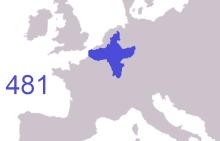
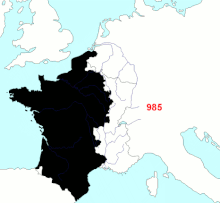



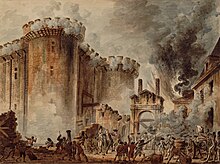
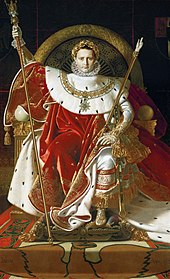



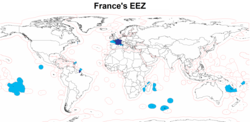


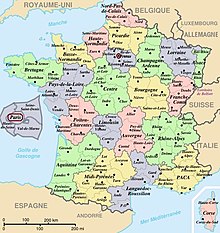
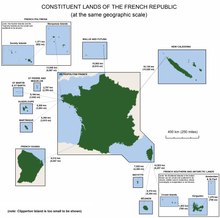








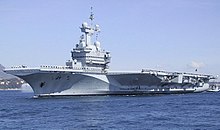



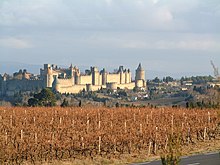





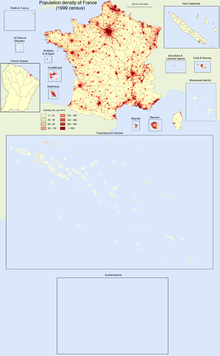

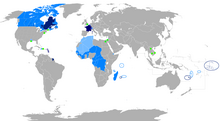
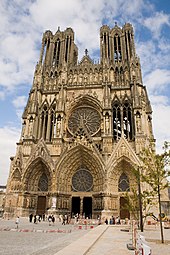
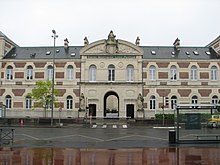






 Posted in:
Posted in: 

0 comments:
Post a Comment